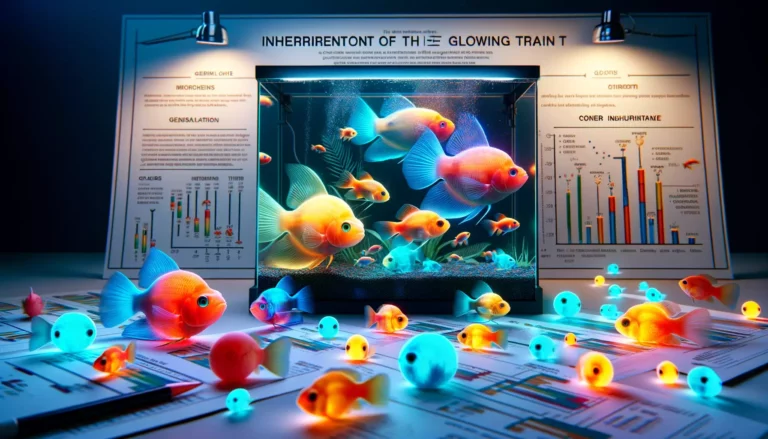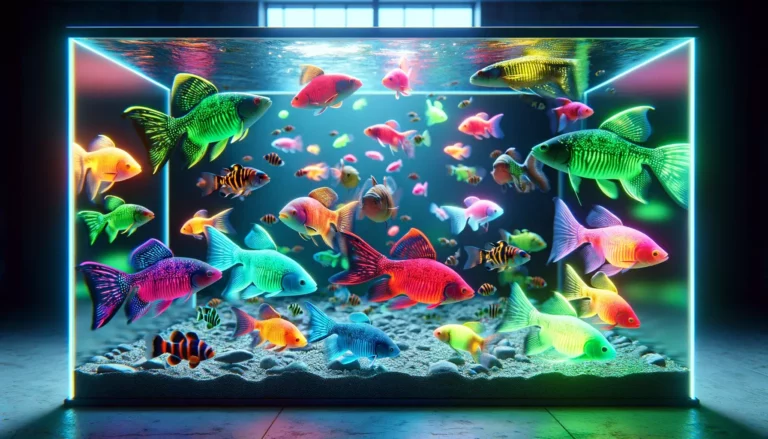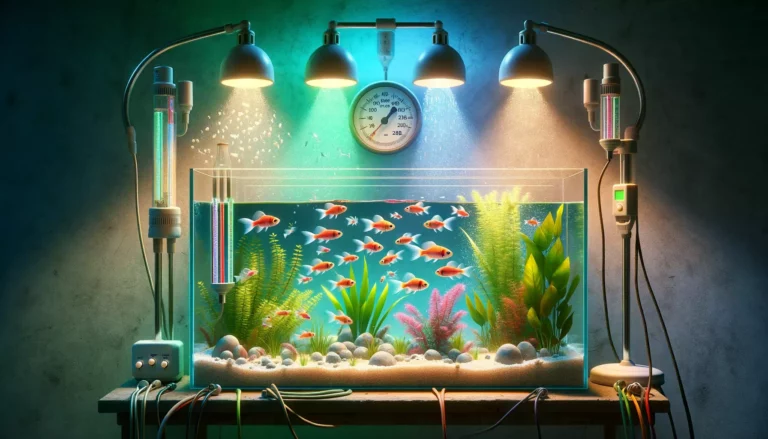GloFish Species Can Be Aggressive or Territorial
GloFish are known for their vibrant colors and are a popular choice for home aquariums. However, some species can show aggressive or territorial behaviors. The Tiger Barb and certain Danio species, like the Zebra Danio, are more prone to these traits. Tiger Barbs, especially, may nip fins and chase other fish. Zebra Danios can also be fin nippers. They become more aggressive if kept in small groups or cramped spaces.
It’s not just species-specific. Individual fish personalities vary. Some may be more aggressive, while others are peaceful. Aggression often comes from stress, competition, or inadequate space. It’s crucial to observe your fish and note any aggressive interactions.
To mitigate these issues, provide ample space and hiding spots. Ensure the tank is large enough for the fish to establish territories. A well-maintained tank with proper conditions can reduce stress and aggression. Regular monitoring helps catch any issues early, maintaining harmony in your aquarium.
Key Factors Contributing to Aggression in GloFish Species
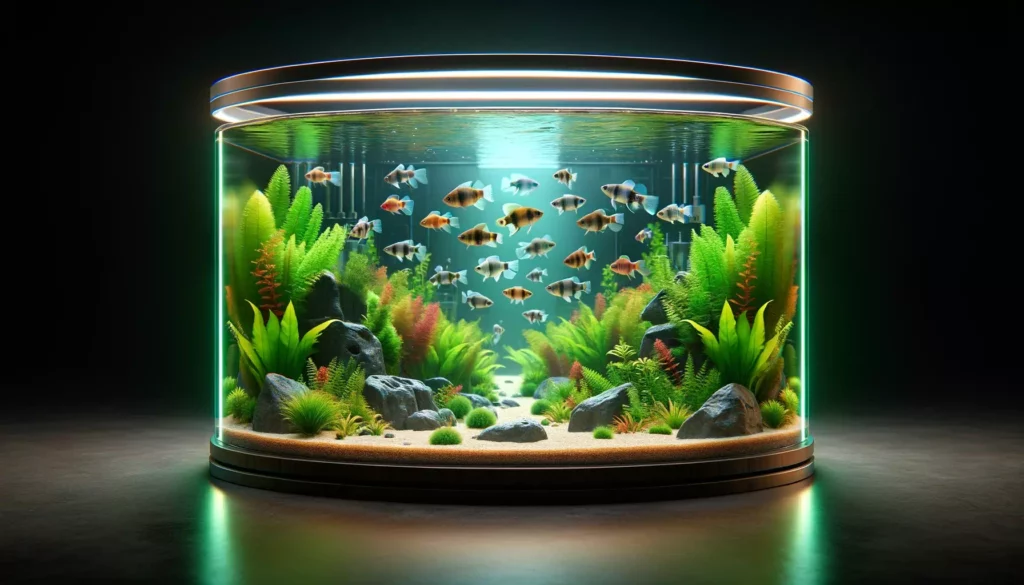
Several factors can lead to aggression in GloFish. Understanding these can help in creating a peaceful tank environment. Competition for resources is a primary cause. This includes food, space, and hiding spots. Limited resources lead to more conflicts. Overcrowding is another significant factor. Too many fish in a small space increase stress and aggression.
The presence of aggressive species can influence others. Some fish are naturally more territorial. They may exhibit more aggression if housed with similar species. Mismatched groups, where sizes or temperaments don’t align, also contribute to aggression.
To alleviate these issues, provide a spacious tank with ample resources. This includes food, hiding spots, and space to swim. Choose compatible species and consider individual temperaments when adding new fish. Regular tank maintenance is crucial. It ensures a healthy environment, reducing stress and aggression.
Specific Tank Conditions to Reduce Aggression Among GloFish
Creating the right tank conditions can significantly reduce aggression in GloFish. A well-structured environment is crucial. It allows fish to establish territories and reduces competition. This includes ample space for each fish, proper hiding spots, and a well-thought-out layout.
Water quality plays a vital role. Regular cleaning and proper filtration keep the water parameters stable. This reduces stress, a common trigger for aggression. Feeding routines also matter. Consistent and adequate feeding ensures no fish feels the need to compete aggressively for food.
Consider the social structure of your tank. Keep social species in proper group sizes to reduce stress. Provide enrichment, like plants or decor, for exploration and territorial establishment. Monitoring and adjusting these conditions promote a peaceful tank environment, ensuring your GloFish thrive harmoniously.
Identifying Signs of Aggression or Territorial Behavior in Your GloFish
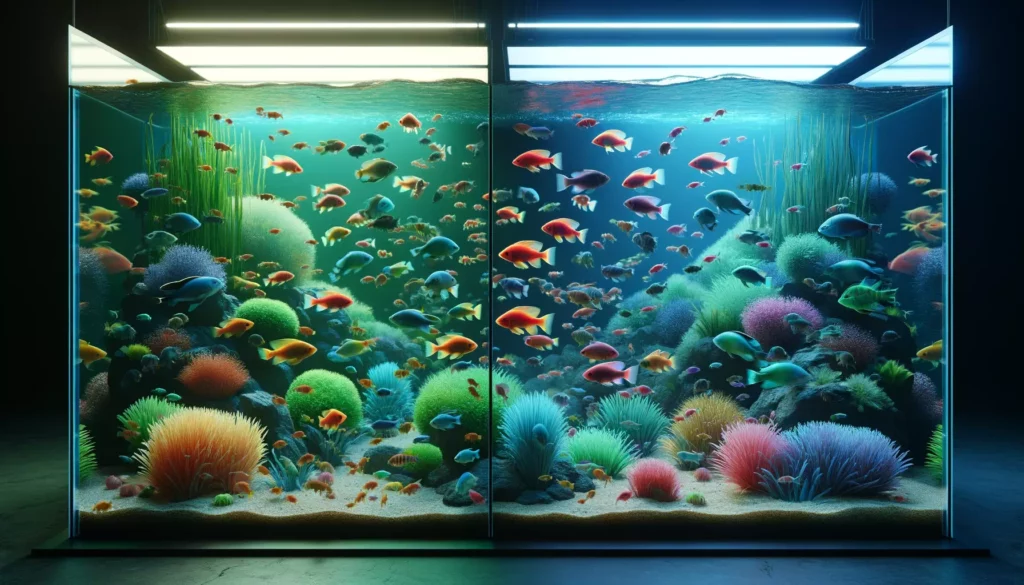
Recognizing aggression in GloFish is key to maintaining a healthy tank. Signs of aggression include chasing, nipping, or fin biting. These behaviors can lead to stress and injury among fish. Watch for fish that guard certain areas. They may chase away others that come too close. This indicates territorial behavior.
Body language reveals a lot. Aggressive fish often have flared gills or fins. They might display brighter colors as a warning. Frequent, rapid swimming or darting can signal stress or aggression. Also, look for fish hiding more than usual. This could mean they are avoiding bullies.
Monitor feeding times closely. Aggression often peaks when food is scarce. Fish that are aggressive may hog food, preventing others from eating. This can lead to malnutrition and increased stress. Observing your fish daily helps in early detection of these behaviors, allowing for prompt intervention.
Differences in Aggression Among GloFish Species from Different Regions
GloFish species hail from various regions. These origins can influence their aggression levels. Environmental factors from their native habitats play a role. Fish from densely populated waters may be more competitive. This can lead to aggressive behavior in aquariums.
| GloFish Species | Region of Origin | Aggression Level in Aquariums |
|---|---|---|
| Tiger Barbs | Southeast Asia (River regions) | High aggression, nippy nature |
| Zebra Danio | Various regions | Moderate aggression, stress in confinement |
| Other GloFish Species | Diverse regions | Aggression level may vary based on native habitat and adaptation to captivity |
Tiger Barbs, for instance, are known for their nippy nature. They originate from river regions in Southeast Asia. These waters are often competitive environments. Hence, Tiger Barbs may show more aggression, especially if their tank conditions mimic their natural habitat.
Danios, like the Zebra Danio, come from different regions. They are used to fast-flowing streams and large spaces. Confinement and lack of swimming space can trigger stress and aggression in them. Recognizing these regional differences helps in tailoring tank conditions. It ensures a more harmonious environment suited to the specific needs of each GloFish species.
Gender-Specific Patterns of Aggression in GloFish
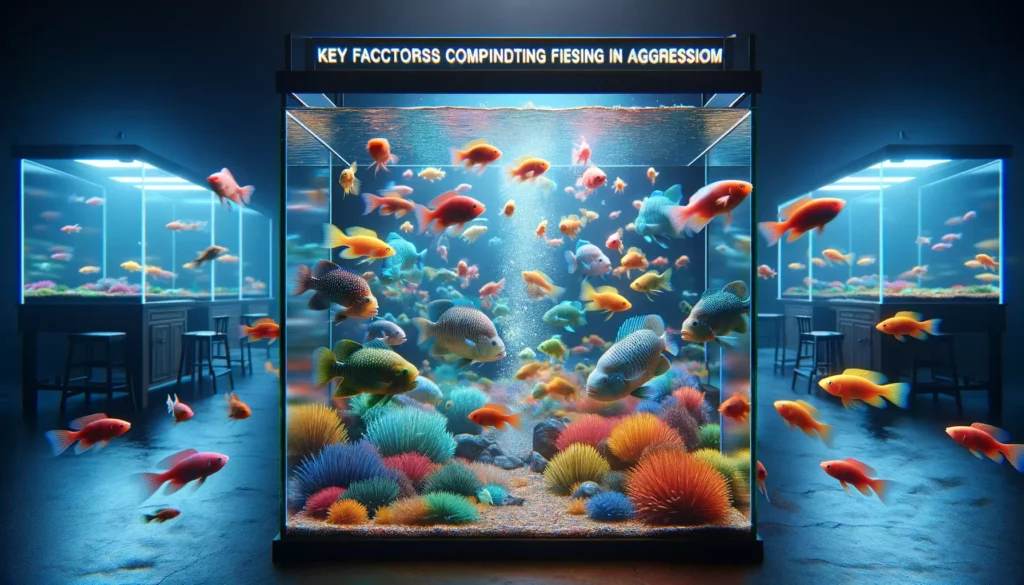
In GloFish, gender can influence aggression patterns. Male GloFish often display more aggression than females, especially during breeding times. They may become territorial, guarding specific areas against other males. This is more evident in species like Tiger Barbs. Males may chase females during mating rituals, which can be mistaken for aggression.
Female GloFish, while generally less aggressive, can still show territorial behavior. This is especially true if they are guarding eggs or fry. Observing the dynamics between males and females in the tank is crucial. It helps in understanding the root of aggressive behaviors.
Gender balance in the tank is important. Too many males can lead to heightened aggression due to competition. A balanced ratio or a group with more females can reduce aggressive encounters. Monitoring interactions and adjusting the group composition accordingly can promote a more peaceful tank environment.
Potential Consequences of Housing Aggressive GloFish with Non-Aggressive Species
Mixing aggressive GloFish with peaceful species can lead to several issues. Aggressive fish may bully or harass more docile tank mates. This can cause stress, leading to health problems like weakened immune systems or decreased appetite. Constant chasing can exhaust the peaceful fish, making them more susceptible to diseases.
| Consequence | Description |
|---|---|
| Bullying and Harassment | Aggressive GloFish may target peaceful species, causing stress and health problems. |
| Stress and Health Problems | Constant harassment can weaken immune systems and reduce appetite in non-aggressive species. |
| Exhaustion | Peaceful fish can become exhausted from constant chasing, making them more susceptible to diseases. |
| Injuries | Aggressive GloFish may nip fins or bodies of peaceful species, potentially leading to wounds and infections. |
| Dominance of Food Sources | Aggressive species might dominate food sources, leaving less aggressive fish malnourished. |
| Disruption of Natural Behavior | Aggression can disrupt the natural behavior of all fish, leading to hiding and reduced activity. |
| Decline in Overall Well-being | Overall well-being of the tank’s inhabitants can decline due to aggression. |
| Prevention through Species Selection and Temperament Understanding | Careful selection and understanding of GloFish temperament can help prevent these issues. |
Injuries are another concern. Aggressive GloFish may nip fins or bodies of peaceful species. This can result in wounds, which, if not treated, can become infected. Furthermore, aggressive species might dominate food sources. This can leave the less aggressive fish malnourished.
The overall harmony of the tank is at risk. Aggression can disrupt the natural behavior of all fish. It can lead to hiding, reduced activity, and a decline in overall well-being. Careful species selection and understanding the temperament of each GloFish can prevent these issues.
Strategies for Managing or Mitigating Aggression in GloFish Tanks

Managing aggression in GloFish tanks involves several strategies. Creating a well-designed habitat is fundamental. Ensure the tank is spacious enough for all inhabitants. Provide plenty of hiding spots and visual barriers. This allows fish to escape aggression and reduces overall stress.
Maintain a balanced social structure. Keep schooling fish in proper group sizes. This can reduce aggression as fish feel more secure in numbers. Be mindful of the male-to-female ratio. More males can lead to increased competition and aggression.
Monitor feeding to ensure all fish get enough food. Consider multiple feeding spots to reduce competition. Regular tank maintenance is crucial. Clean water and stable conditions keep fish stress-free, reducing aggressive behavior.
Intervene early if you notice signs of aggression. This might mean rearranging the tank, adding more hiding spots, or even separating fish if necessary. Consistent observation and timely adjustments can make a big difference in maintaining a peaceful GloFish community.
Tank Size and GloFish Quantity’s Impact on Territorial Behavior
Tank size and the number of GloFish are key factors in influencing territorial behavior. A cramped tank can heighten stress and aggression. Each GloFish species has specific space requirements. Not meeting these can lead to territorial disputes. Fish might compete for limited resources like hiding spots and swimming areas.
| Tank Size | GloFish Quantity | Territorial Behavior |
|---|---|---|
| Small | Few | Increased Stress and Aggression |
| Small | Many | Territorial Disputes, Competition for Resources |
| Large | Few | Reduced Confrontations, Proper Segregation |
| Large | Many | Potential Overstocking Issues, Water Quality Concerns |
| Proper Space for Each GloFish | Reduced Territorial Aggression | |
| Regular Monitoring of Tank Conditions | Maintaining a Peaceful Aquarium |
A larger tank provides more space for territories, reducing confrontations. It allows for proper segregation of aggressive species. This prevents them from dominating the entire space. Overstocking, even in a large tank, can still lead to problems. It’s not just about space, but also about the quality of the environment. Overcrowded tanks can have poor water quality, further stressing the fish.
It’s crucial to understand the space needs of your GloFish. Provide ample room for each fish to roam and establish territories. This reduces the chances of territorial aggression. Regular monitoring of tank conditions and fish behavior helps in maintaining a peaceful aquarium.
GloFish Species Prone to Aggression and Reasons Behind It
Certain GloFish species are more prone to aggression. Tiger Barbs and Zebra Danios are notable examples. The reasons behind their aggression can be intrinsic or due to environmental factors. Tiger Barbs are naturally nippy and may show fin-biting behavior. This is often exacerbated in small or crowded tanks where competition for resources is fierce.
Zebra Danios, while generally peaceful, can become aggressive if kept in small groups. They are schooling fish and feel secure in numbers. A smaller group can lead to stress and resultant aggression. Environmental factors like inadequate space, poor water quality, and incorrect tank mates can also trigger aggressive behavior in these species.
Understanding the natural behavior and needs of each GloFish species is crucial. Providing the right tank conditions, adequate space, and proper group sizes can mitigate aggression. Regular observation and maintenance ensure a harmonious environment, catering to the well-being of all fish in the tank.




